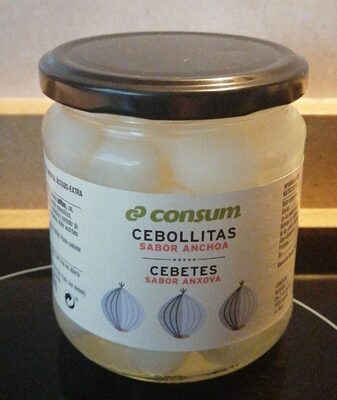Cebollitas sabor anchoa - Consum - 345g
Aquesta pàgina del producte no està completa. Podeu ajudar a completar-la editant-la i afegint-hi més dades a partir de les fotos ja disponibles, o fent-ne més amb l'aplicació de androide o iPhone / iPad. Gràcies!
×
Codi de barres: 8414807526090 (EAN / EAN-13)
Nom comú: Cebollitas blancas sabor anchoa
Quantitat: 345g
Marques: Consum
Categories: Aliments i begudes amb base vegetal, Aliments amb base vegetal, Aliments amb base de fruites i verdures, Aliments enllaunats, Aliments amb base de verdures, Aliments enllaunats amb base vegetal, Conserves, Vegetals enllaunats, Conserves vegetals, en:Onions and their products, en:Pickled vegetables, en:Pickled onions
Etiquetes, certificacions, premis:
Punt verd
Botigues: Consum
Països on es va vendre: Espanya
Matching with your preferences
Salut
Ingredients
Processament d'aliments
Additius
Anàlisi dels ingredients
Nutrició
Entorn
Empaquetament
Transport
Report a problem
Fonts de dades
Producte afegit per kiliweb
Última modificació de la pàgina del producte per alia.
La pàgina del producte, també editada per teolemon, yuka.Ykx3N0MvVmUrTUVhdXMwMG8wUHc1UE55NDVHa1dFM3FKZnBOSUE9PQ, yuka.ZEtzTU1yb0FqK2hXc01BU3poYjA5dW91eElhUVEzaXlMdE04SVE9PQ, yuka.sY2b0xO6T85zoF3NwEKvlhJkWtXgrC7nHDXUg1eA4fOAPIfSRddW5LjGPas.






